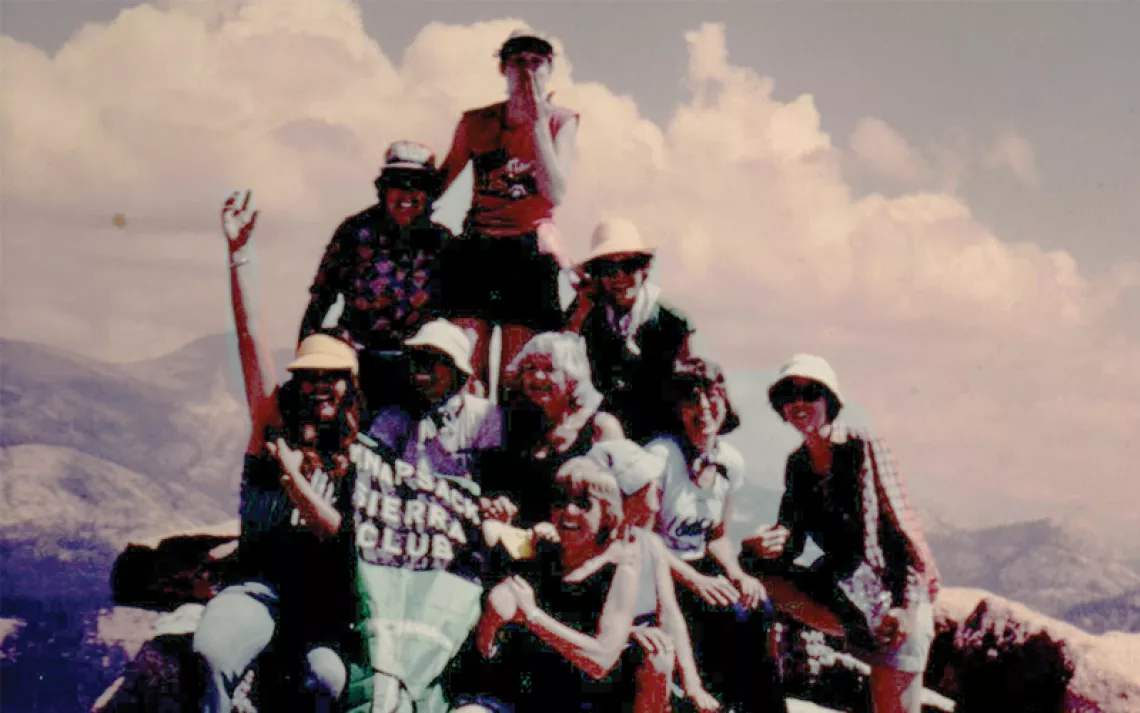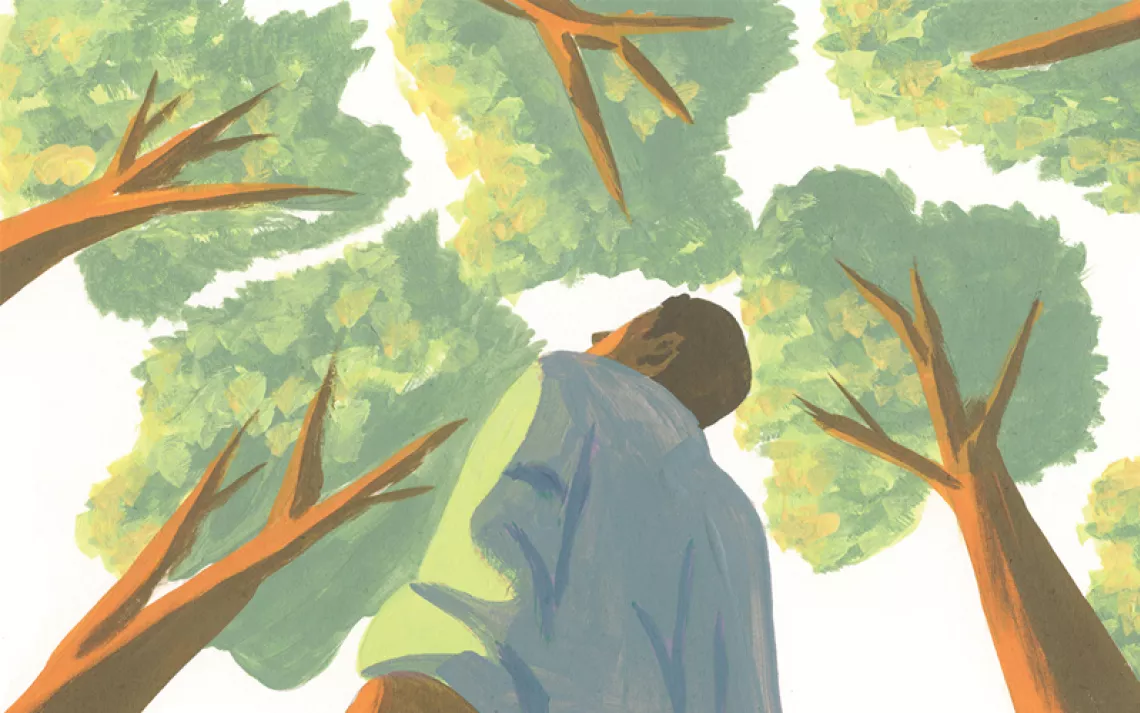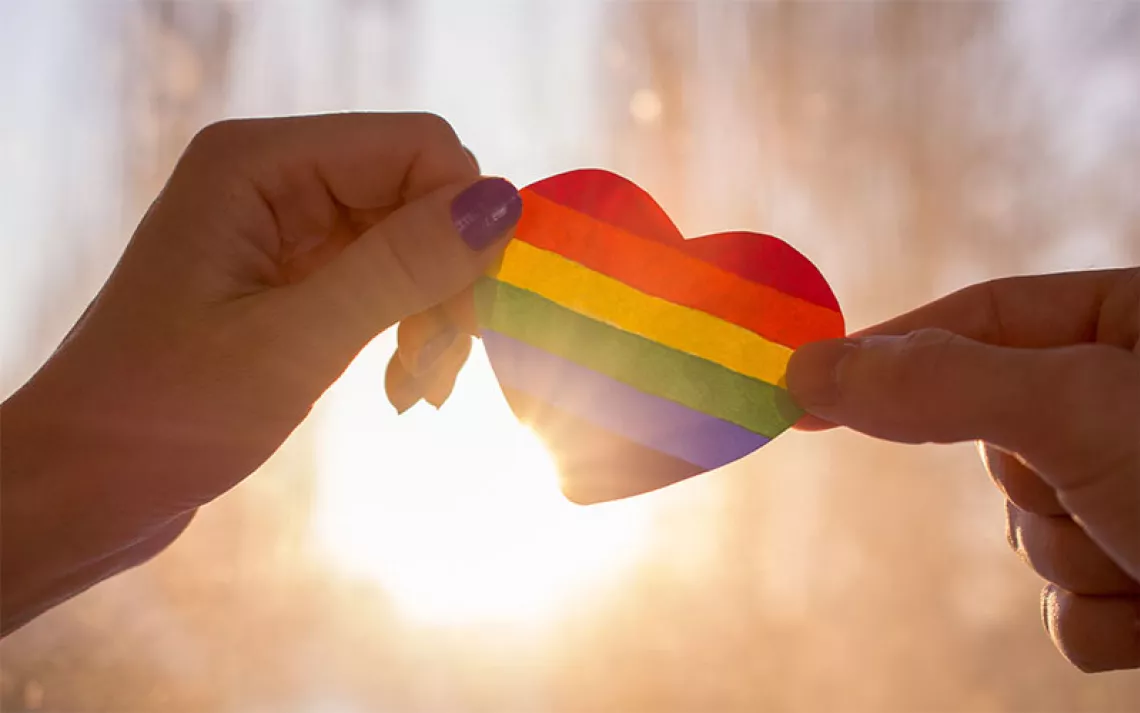Taking Inclusivity to New Heights
Adaptive athlete and activist Vasu Sojitra opens up about making the outdoors more accessible
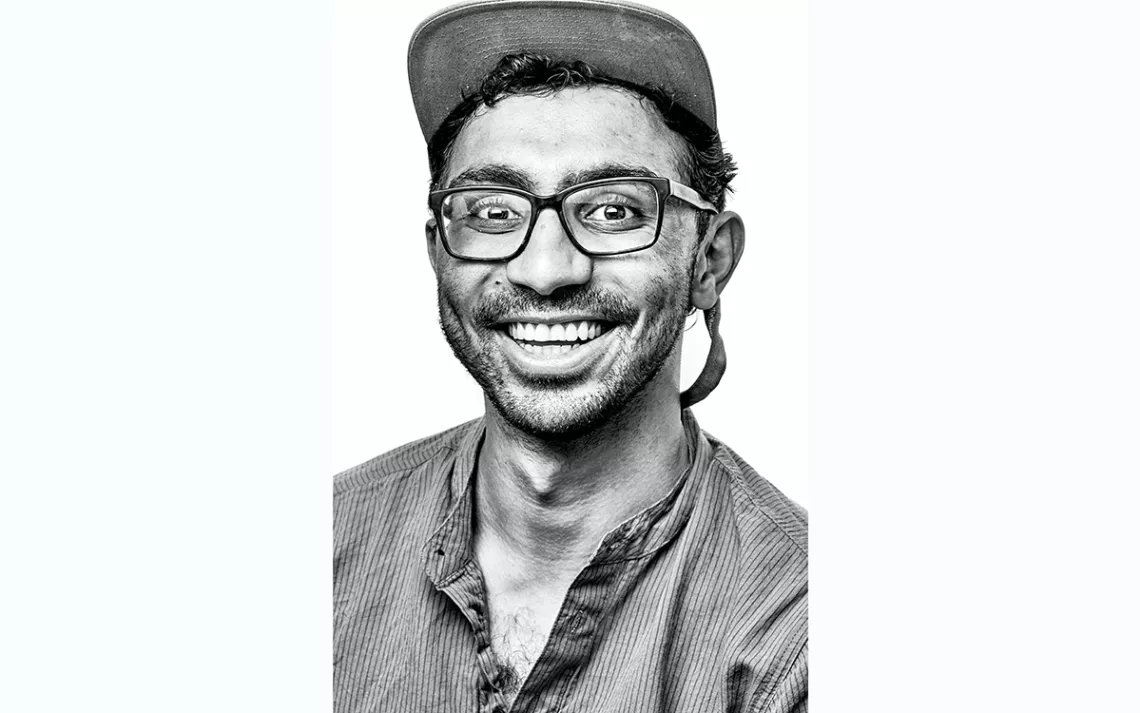
Photos courtesy of the North Face
Vasu Sojitra doesn’t want to be treated differently for what he’s accomplished.
At the age of 30, he’s climbed and skied down the face of Denali and Mount Moran’s Skillet Glacier, climbed Grand Teton, gotten shout-outs from Tony Hawk for his skateboarding skills, and earned sponsorships from elite brands like the North Face and Faction skis.
He’s done all of this on one leg. When Sojitra was nine months old, his right leg was amputated right below his hip socket due to a serious blood infection. Since then he’s used crutches, or “ninja sticks” as he likes to call them, to balance, carve, hike, and skate.
“Adaptive athletes are athletes,” says Sojitra. “I'm pushing my body as hard as the next athlete, adaptive or nonadaptive. These categories are a great way of providing some representation for the next generation, but we should be viewed just as athletes as well.”
Sojitra shares how he first fell in love with the outdoors over Zoom from his home in Bozeman, Montana. He describes how growing up in Connecticut, he experienced “brown joy” watching diverse TV shows like Rocket Power and Johnny Tsunami, where he saw fellow kids of color doing extreme sports. It meant keeping up with his adventurous and encouraging older brother, Amir, who introduced him to skiing and skateboarding when he was 10. He recalls sitting in front of the television watching X-Games, where sports like skateboarding entered the mainstream, and being immediately drawn in.
“We found the cheapest gear we could and convinced our Indian parents to drive us up to go skiing,” says Sojitra. But it didn’t come easy. He says it took him about a decade to get the hang of the sport and have tailored equipment made for him so that he could ski on one leg. He uses specialized ski bindings and outriggers, forearm crutches with little skis on the bottom. While at college in Vermont, his friends, eager to get Sojitra into the backcountry, came up with an idea of using snowshoe baskets, which he still uses to ski steeps today.
Watching Sojitra ski is profoundly impressive, not because of his disability, but because he’s a tremendous athlete. Period. To reach the tops of bowls, he performs the equivalent of hundreds of arm dips, oftentimes lugging up equipment behind him. At the summit, he tackles insanely sheer and narrow lines, making agile and graceful turns, powder gliding off the backs of his skis.
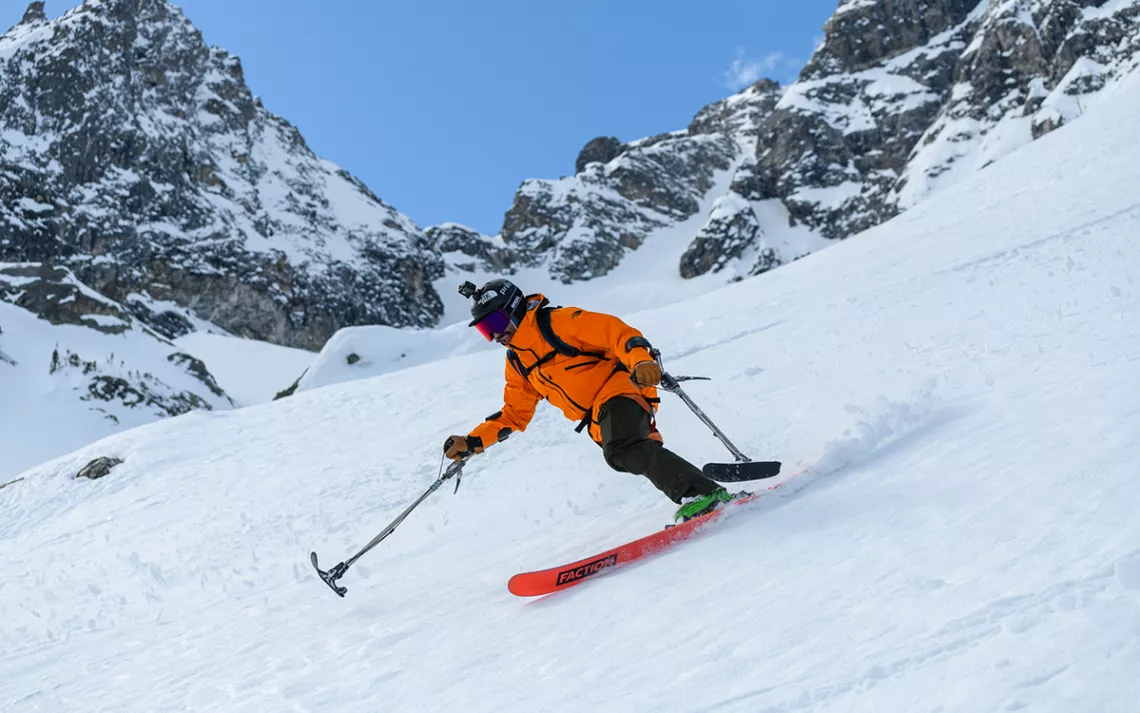
His motto is “ninja sticking through the woods to bring intersectionality to the outdoors,” a phrase first coined by his friend Mike Gardner, who guided him up Grand Teton in 2014. Gardner watched as Vasu walked on a precarious ledge, only about two feet wide, with one crutch on each side of a 2,000 cliff, and exclaimed, “Holy hell, man! You're ninja sticking up this mountain!”
“The phrase sort of stuck,” Sojitra comments. “I realized that it brings a levity to the more sensitive, uncomfortable topics around medical equipment and disabilities. Every time I tell kids that these are my ninja sticks, they light up and want to use them.”
As Sojitra continued to improve his skiing, taking on bigger mountains and more technical descents, it was the community that made the mountains feel like home. He recently returned from a road trip that took him from Jackson Hole, Wyoming, to Park City, Utah, and to Telluride, Colorado. With his friends, he bombed a steep powder line off Cody Peak one day and spent the day skiing at Park City’s National Ability Center the next. The center boasts a large adaptive sports program that includes everything from horseback riding to mountain biking to skiing.
“They have a ton of programming for people with all kinds of disabilities, including veterans. It was cool to connect with them, go out on lessons, and watch people make progress and enjoy skiing as much as I do,” says Sojitra.
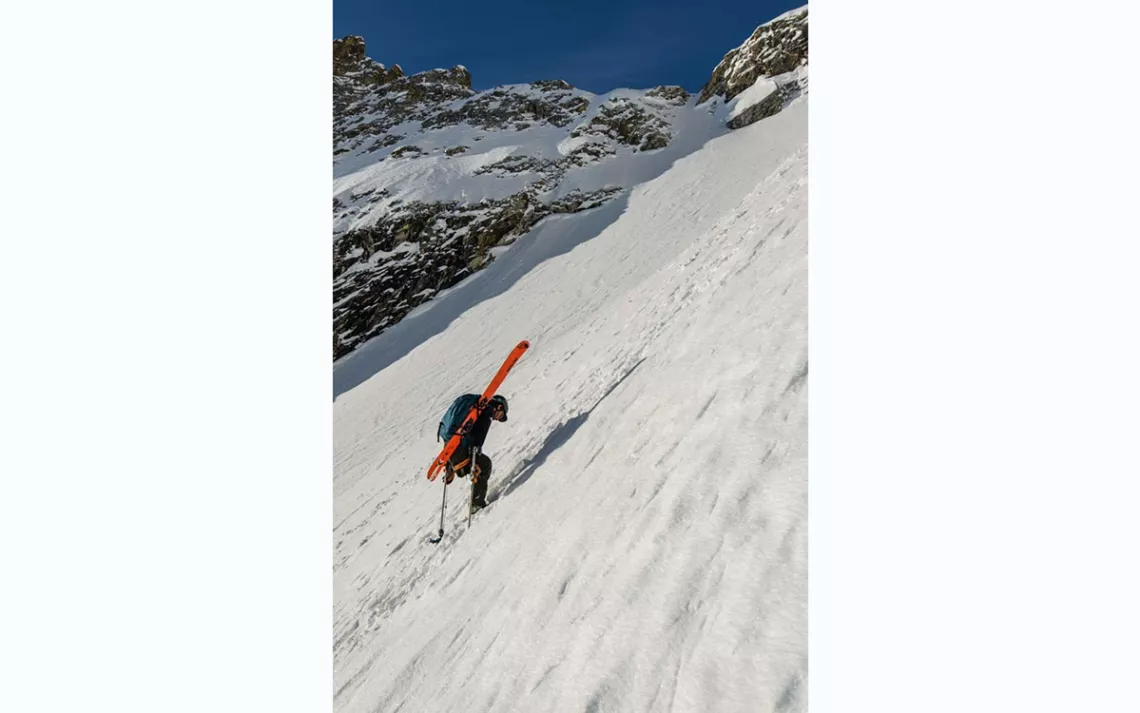
But as he met more fellow adaptive athletes, he wondered why they weren’t being represented in the professional spheres. In response, he cofounded the Inclusive Outdoors Project with climber and DEI strategist Sophia Bielsky, which promotes inclusion and representation for BIPOC, people with disabilities, and the LGBTQ communities within mountain-based activities. The idea is to break down barriers of access to outdoors spaces and to make people feel safe and cared for. Sojitra uses this platform to work to disrupt the status quo, amplify voices that are often overlooked, and break from the often homogeneous and exclusive nature of outdoor culture.
One way that he has been able to share his story and find his voice is through social media. His Instagram posts, shared with over 52,400 followers, feature impressive descents and technical climbs, paired with essays on redefining access, denouncing ableism, and making the connection between the disability justice and social justice movements.
“Time and time again, racial and social justice movements erase or forget about disability, despite the fact that it’s the largest minority in the world,” asserts Sojitra. “Racial justice is not disability justice, but disability justice is racial justice because the focus of disability justice is providing access and resources and opportunities for people that are usually historically excluded.”
In describing his experiences in outdoor adventuring, Sojitra emphasizes that, while our differences make us unique, we should not focus on them. It’s our similarities that bring people together, and combating ableism in the outdoors means bridging the gap between communities—adaptive and nonadaptive, white folks and people of color. To him, it’s about meeting people where they are and redefining what access means.
“I think access is more of a state of mind than anything. It’s the way that we communicate our body language. It’s our presence. It’s knowing when to support and care for someone, knowing when to ask the right questions, knowing what physical assistance people need—it's all of these things combined. It’s not an accessible ramp or accessible parking; it's everything in between,” says Sojitra.
He is on a mission to expand the narrative around what it means to be a disabled person of color in the outdoors, to show joy and confidence in being in one’s skin, and to be a mentor for other people who don’t yet see themselves represented in the media. As much as Sojitra challenges himself, he challenges others to rethink how we can create a more inclusive world and reach greater heights.
 The Magazine of The Sierra Club
The Magazine of The Sierra Club

